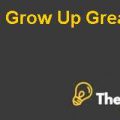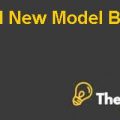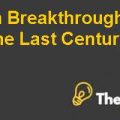Toyota Case Solution
Converting strategy into action:-
Strategies are made to gain competitive advantage, because those companies that do not have their own strategy fail to survive. Toyota has also made the strategies to gain competitive advantage and has gained market share as well as it has increased the profitability of the organization. Toyota believes that they should respect the environment and support the community by decreasing the pollution and co2 emission rate.
Toyota has built pillars into its corporate culture as everyone can understand what they have to do, and this will also help employees to take action at any stage of the organization.
Toyota can also contribute to them by using eco-friendly production plant in manufacturing of the cars, as this will result in reducing the emission rate and wastage. Toyota can use eco-friendly transport of the raw material from the supplier to the company’s premises and finish good from the company premises to the final user.
After making these strategies, these should be implemented and regular updates should be taken about the new plan.
Building the pillars into the corporate culture can be done by organizing workshops and meeting with the staff and creating awareness about the company's new vision. Toyota should contact the supplier to use eco-friendly transport or arrange eco-friendly transport itself. Exiting plant should be uninstalled and eco-friendly plant should be installed, which would manufacture eco-friendly car.
These all steps will help the company to gain the major market share because the world is now shifting towards Eco products and there is excess amount for the Eco friendly products.
Involving the organization & embedding core competencies:-
The core competencies are the skills, characteristics and assets that set Toyota apart from competitors. They are the fuel for innovation and the roots of the competitive advantage.
The old concept of the diversified cooperation is the portfolio of the strategic business unit, in today’s world Toyota must maintain competitiveness by developing the core competencies.
This is a critical task for the management of Toyota for being capable of creating the products, which customers cannot even imagine. It requires radical change in the management and to understand the changing basis for global leadership and in order to gain this Toyota should think out of the box and cross the boundaries rather than focusing on the strategic business unit.
Core competencies can be derived from the collective learning of the employees and ability to work across the organization. With major core competencies, Toyota can compete in the industry because the competitors cannot buy these similar competences from the market easily. Toyota’s core competencies should be difficult for the competitors to imitate, and it will be difficult if it harmonizes individual technologies and production skills. Toyota’s core competencies lie in achieving excellence through the continuous improvement and waste reduction. Toyota’s global suggestion system results in thousands of improvements every year, from the arrangement of a work team on the production floor to quality of soap in the restroom. Nearly 90% of suggestions are implemented.
Toyota has become a self organizing process where potentially interested people from around the company receive an invitation to view how a problem is solved.
Core competencies can be embedded in Toyota in following ways,
- Regularly arranging the professional development programs for the technical staff
- Training of the core employees on regular basis.
- Arranging induction programs for newly joined the staff.
Competencies help Toyota to exploit opportunities by creating value for customers or to reduce threats in the business. Moreover, it has capabilities that other competitors cannot develop easily usually due to historical conditions.
Getting value for your money:-
Toyota should give its customers value for money products, which means the product should be worth more or equal to what the customer is paying. The customer will purchase the product when they get the value of what they are paying.
If you go to the market for a reliable car, you will see lots of different models on your shopping list. Chances are your list of potential car candidates includes 2016 Toyota Corolla and Honda Civic (2016). Both of these economy cars are constant sizzling sellers, and they both hail from car makers known for their reliability, strong resale value and exceptional fuel economy.
Providing an excellent brand value has always been an important part of the culture at Toyota, and with Toyota Corolla (2016) the company proves again that it deserves to wear the brand value crown. Toyota scored well in all parts of the value equation, from the affordability of the purchase price to the cost of insurance, repairs, and maintenance.
If you would like to get an up-close look at the most valuable brand in the entire world, just head down to Atlanta Toyota for a test drive of the new 2016 Corolla. Toyota has continued to move forward with every new model year, producing cars that are fun to drive, affordable to buy and economical to own. When you test drive 2016 Corolla, you will know why Toyota is once again the world’s most valuable brand.
Toyota Harvard Case Solution & Analysis
In the end, however, it is 2016 Toyota Corolla that comes out on top. Toyota offers a number of important benefits for all kinds of drivers, making it the superior choice in different ways............
This is just a sample partial case solution. Please place the order on the website to order your own originally done case solution.











